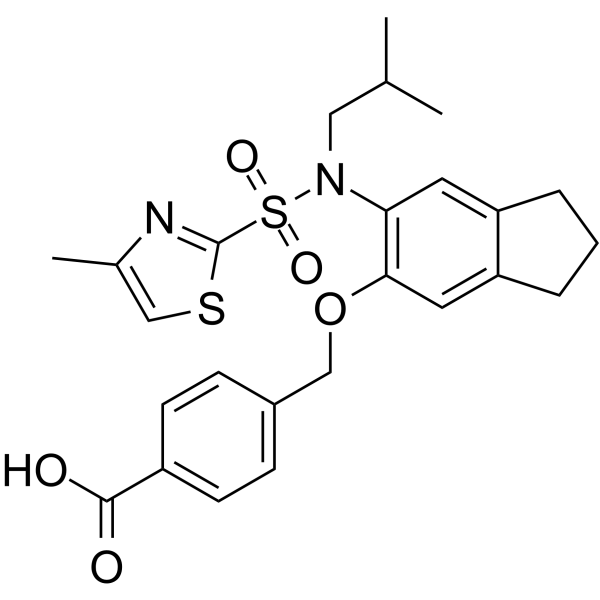| In Vivo |
ONO-8130 (0.3-30 mg/kg; Oral preadministration, once) strongly prevents both the bladder pain-like behavior and referred hyperalgesia in a dose-dependent manner[1]. ONO-8130 (30 mg/kg; Orally, once) reverses the established cystitis-related bladder pain[1]. ONO-8130 (30 mg/kg; Orally, once) strongly inhibits phosphorylation of ERK in MDH, DCM, and SPN of the L6 spinal cord caused by intravesical administration of PGE2[1]. Animal Model: Female ddY mice (18-22 g, 4-5 weeks old)[1] Dosage: 0.3, 3, 10, and 30 mg/kg Administration: Orally, once Result: Strongly prevented both the bladder pain-like behavior and referred hyperalgesia in a dose-dependent manner, but had slight effect on the increased bladder weight and vascular permeability. Animal Model: Female ddY mice (18-22 g, 4-5 weeks old, established bladder pain caused by IP cyclophosphamide)[1] Dosage: 10, 30 mg/kg Administration: Orally, once (administered 2.75 hours after i.p. cyclophosphamide) Result: Markedly attenuated the bladder pain-like nociceptive behavior and referred hyperalgesia in the acute phase (3.5-4 h after cyclophosphamide). Animal Model: Female ddY mice (18-22 g, 4-5 weeks old, established bladder pain caused by IP cyclophosphamide)[1] Dosage: 30 mg/kg Administration: Orally, once (administered 4.75 hours after i.p. cyclophosphamide) Result: Significantly suppressed the bladder pain-like nociceptive behavior and tended to reduce the referred hyperalgesia in the persistent phase, 5.5-6 hours after cyclophosphamide. Animal Model: Female ddY mice (18-22 g, 4-5 weeks old, intravesical administration of PGE2 at 5 nmol/mouse)[1] Dosage: 30 mg/kg Administration: Orally, once Result: Strongly inhibited phosphorylation of ERK in MDH, DCM, and SPN of the L6 spinal cord caused by intravesical administration of PGE2 at 5 nmol/mouse, exerted complete blockade in DCM, while its inhibitory effects in MDH and SPN were partial.
|
